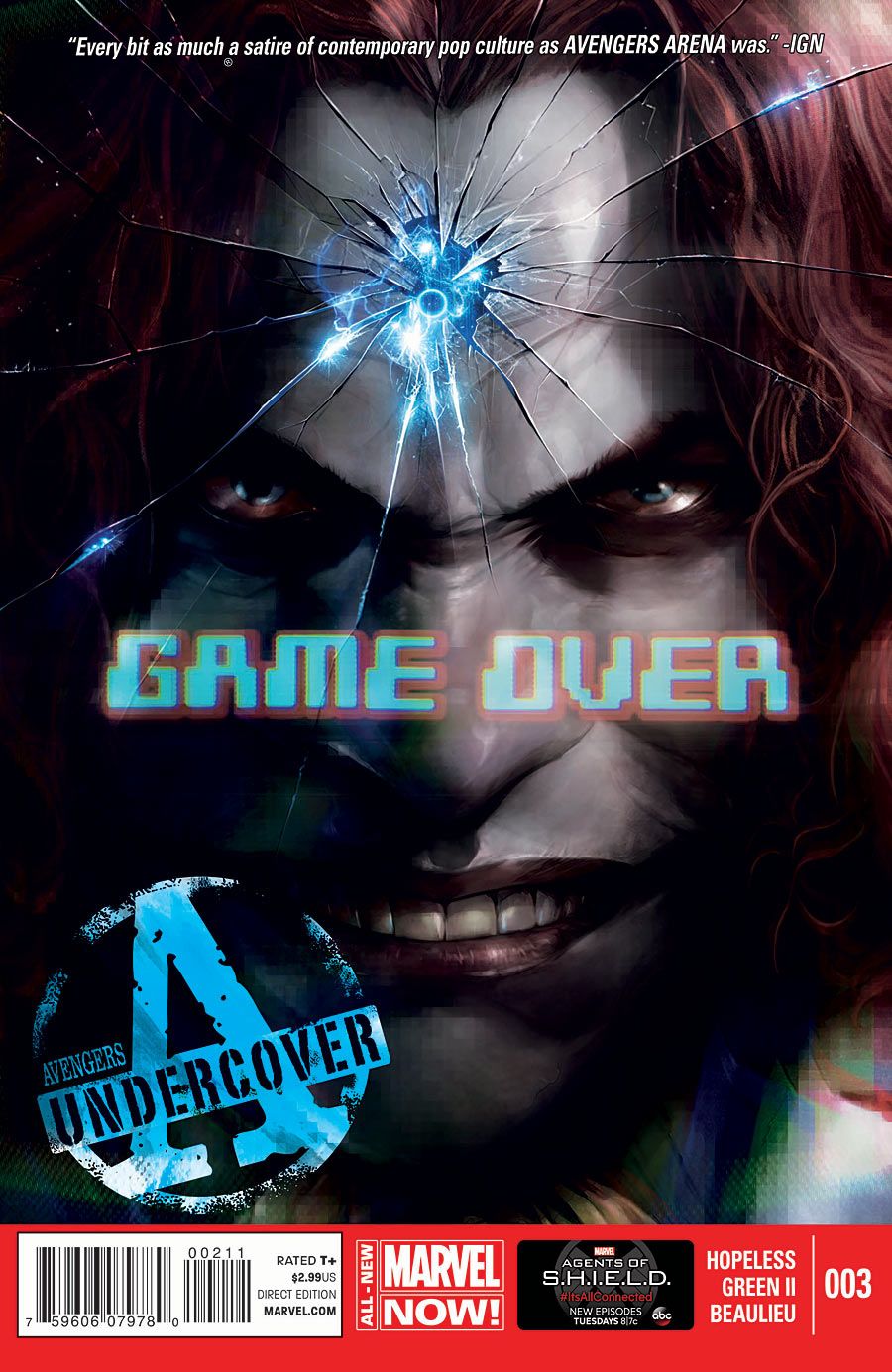In Issue #3, "Avengers Undercover" still refuses to wimp out, and its commitment pays off. By engaging with intriguing questions about consequence and character, Dennis Hopeless has given this series a set of stakes that's unique in the mainstream superhero market. Intrigue, plot, punching and kicking are all a part of what's going on, but the focus is set squarely on how the Murder World survivors will internalize what's happening, rather than on how they'll live through it. It's a fantastic use of the series' premise, but unfortunately Timothy Green's art doesn't always do the story justice.
In a book like this, the team dynamic is of utmost importance, and Hopeless has constructed an engaging and believable one. Each character reacts to his or her trauma in a different way, from Nico's rage to Cullen's new friendship with the Masters of Evil, but they don't fight one another tiresomely. Instead, each argument is fought with an end goal. The characters are never shaming or blaming one another; they're trying to understand and be understood. When Nico wants to fight and Cammi doesn't, she doesn't call her a coward. Instead, she reminds her that she doesn't speak for everyone and shouts, "Some of us need this!" Dialogue like that makes these characters feel tight-knit despite their differences of opinion, and it goes a long way toward making the work book. Hopeless is also careful not to pick favorites. If there is a "star" here, it might be Hazmat, but everyone gets a moment.
Unfortunately, Green's panels often feel cluttered and strangely oriented. Taken on its own, his figure work is solid, and his faces are readable and expressive. There are even a few panels I really admired. However, his more complicated scenes are usually too full and confusingly laid out.
In this issue, there is one sequence in particular where Arcade can ostensibly see the Murder World survivors, but they can't see him. This is a gimmicky enough idea to begin with - a criticism that falls on Hopeless, to be fair - but the scene is drawn so as to render it utterly unbelievable. Green places Arcade incredibly close to them, with his back to a wide, empty hallway that contains nothing to obscure him from their view. It's meant to be clear that they're fighting one another, and therefore distracted, but there's just no way they wouldn't have even glanced to the right (if one takes the art at face value).
Still, "Avengers Undercover" isn't coming off my pull list any time soon. It's doing fascinating things with unexpected, underused characters while still offering a dark satire of pop culture. More importantly, though, Hopeless creates genuine questions about how each of his characters will act. I find them difficult to predict, in a way that I don't often experience with older mainstream superheroes, who've already grown into themselves. In that way, "Avengers Undercover" taps into one of the coolest things about young superhero titles: it isn't just about who they're fighting, it's about who they'll become.

